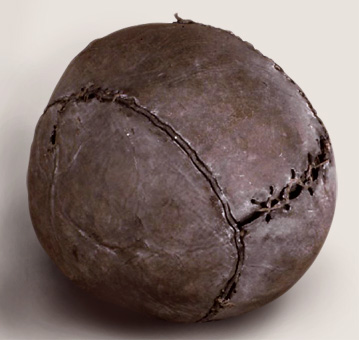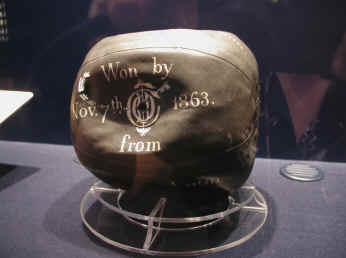Table of Contents
ToggleSoccer has existed for quite some time. The earliest record of the history of the soccer ball reveals that the first ball was not intended for an organized game. The first human beings to kick around any ball-like objects did it subconsciously. The motivation to do this could have originated from several factors. Kicking objects could have been a quicker way of clearing any objects on the pathways. This could be the case with those who used to kick dead human skulls. The habit could have originated from the pure disdain of such bony shapes or even a need to stretch the feet a little. It could as well have been born out of curiosity.
Soccer Balls in Ancient Times
The object-kicking habits gradually developed into a game and the need for a reliable soccer ball arose. Among the ancient South Americans (Red Indians), a light round-like object made of animal skins was used. Before the development of this ball, children between two neighboring villages would engage in a fierce kicking game using a human skull as the soccer ball. Each side would make every effort to kick the skull and make it land in the neighboring village. The children of the opposite village would respond and kick the skull several times until it got to the initial village. This went on for a while and sometimes it worsened and evolved into war-like confrontations.

Later developments saw the invention of the pig-skin ball. To keep the shape of the ball, the pig bladder from one of the slaughtered animals was put inside the pig-skin and inflated. The challenge with this kind of ball is that it was quite heavy and could not last long. After some time the pig bladder inside would start to leak or even burst thus creating a need for another ball. Of course, due to the love of the game, a new pig was slaughtered and its bladder used to replace the old one!
Soccer Balls in the 19th Century
As the soccer game progressed and its interest grew among the people, a need for a reliable soccer game arose. Charles Goodyear in a bid to save the situation patented the first vulcanized rubber ball in 1836 AD. The ball did not have a definite shape and it looked more of a backpack than a ball. Later developments by H.J. Lindon availed inflatable rubber bladders. This was quite a milestone in the development of the soccer ball.

The history of the soccer ball took an entirely new direction when in 1863 AD the English Football Association met with the chief goal of streamlining the rules of the game. These rules were later revised and amended. Some of the notable revisions were that the soccer ball would be perfectly spherical and have a circumference of 27 to 28 inches. Surprisingly these dimensions are still part of the current FIFA laws. The weight of the ball was supposed to be 13-15 ounce, a standard which was later changed in 1937 adding one ounce to the standard weight of the ball.
The English Premier League which was formed in 1888 catapulted the mass production of these spherical soccer balls. Despite the high demand for these soccer balls most of the design work was manual and thus there existed a lot of mismatches between different balls.
Soccer Balls in the 20th Century
The 20th century saw significant improvement of the soccer ball. The soccer bladders could withstand higher air pressure, the balls looked more rounded in shape and the leather material used became stronger and more durable. At the same time, a new stitching technology came into use; the stitching of the ball cover was done with the inside out. After the ball cover was completely stitched it was then reversed thus hiding the stitches and reducing the roughness of the ball.
Other later developments in this century include the use of synthetic paint to reduce the water absorption capabilities of the leather, and the invention of a new valve design which eliminated the slit which was left on one of the panels.
21st Century and Beyond – The Best Soccer Balls
The use of synthetic material to make the best soccer balls has been embraced in the 21st century. These balls are smoother, the panels are molded, and the stitch work is machine-done. There is also a gradual shift among the manufacturers from the 32-panel balls to the initial 8-panel balls. The design of the panels has also changed drastically. Since these panels are machine-made, their shapes are cut out in such a manner as to fit seamlessly and form the overall ball shape.

Conclusion
There is much progress going on concerning the design of the soccer ball. With improved technology industrial designers are now taking into consideration the aerodynamic features of the soccer ball when hatching out the new designs. The ultimate soccer ball design will be that which has accurate aerodynamics, completely waterproof, able to transfer all the kicking energy, and safe on the head.


